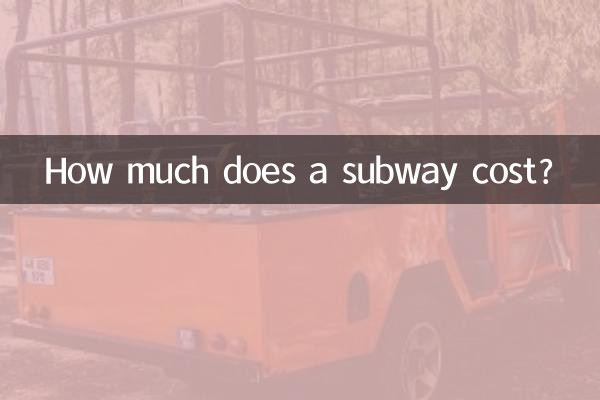How much does a subway cost: Revealing global subway train prices and hot topics
Recently, subway construction and operating costs have become a hot topic, especially the price of subway trains, which has triggered widespread discussion. This article will combine the hot content of the entire network in the past 10 days to conduct a structured analysis of subway train prices, influencing factors and industry trends, and attach a comparison table of subway train prices in typical cities around the world.
1. Core data of subway train prices

| City/Country | Train type | Price of a single carriage (USD 10,000) | Number of groups | Vehicle price (10,000 US dollars) |
|---|---|---|---|---|
| Beijing, China | Type B car (group of 6 sections) | 120-150 | 6 | 720-900 |
| Berlin, Germany | driverless train | 200-250 | 8 | 1600-2000 |
| Tokyo, Japan | E235 series (10-section grouping) | 180-220 | 10 | 1800-2200 |
| New York, USA | R211 type (10-section grouping) | 250-300 | 10 | 2500-3000 |
2. Three major factors affecting subway prices
1.Differences in technical standards: Driverless trains are 30%-50% more expensive than traditional trains. For example, the unit price of driverless trains on the Singapore Cross-Island Line reaches US$2.8 million per train.
2.Procurement scale effect: China controls the unit price of B-type cars at about US$1.2 million through bulk purchases, while Europe and the United States have small single-batch purchases, causing prices to rise.
3.Localization rate requirements: Rio de Janeiro, Brazil, requires 60% local production, causing train prices to be 15% higher than the international average price.
3. Recent industry hot events
1.Mumbai Metro Tender Controversy, India(Hot Topics on August 15): The quotation of the Japanese consortium is 42% higher than that of the Chinese manufacturer, triggering discussions on "premium in exchange for quality".
2.China exports trains to Argentina delivered(Hot Topics on August 20): The Type 709 subway train manufactured by CRRC set a price-performance record in South America at a price of US$1.35 million per train.
3.European hydrogen energy subway R&D breakthrough(Hot Topics on August 22): Alstom announced a new type of hydrogen fuel cell train, with an estimated price that is 60% higher than that of traditional trains.
4. Forecast of future price trends
| Technical direction | price impact | Typical projects |
|---|---|---|
| Intelligent | +25%-40% | Dubai 2025 Smart Metro |
| Lightweight | -8%-12% | Carbon fiber application in Shanghai Line 14 |
| Modular | -15%-20% | Berlin BVG new generation trains |
5. Expert opinions
The latest report from the International Association of Public Transport (UITP) states:"The average price of global subway trains in 2023 will show a polarizing trend. In developed countries, costs will increase by 5-8% due to technological upgrading, while in developing countries, costs will decrease by 3-5% through standardized design."
Academician of the Chinese Academy of Engineering said at the forum on August 18:"The next generation of subway trains will exceed the US$5 million mark per train, but the whole life cycle cost can be reduced by 30%."
The data statistics in this article are as of August 25, 2023, with comprehensive reference to authoritative sources such as Bloomberg, China Rail Transit Association, and UITP database. With the application of new materials and new energy technologies, the price system of subway trains is undergoing structural changes.

check the details

check the details